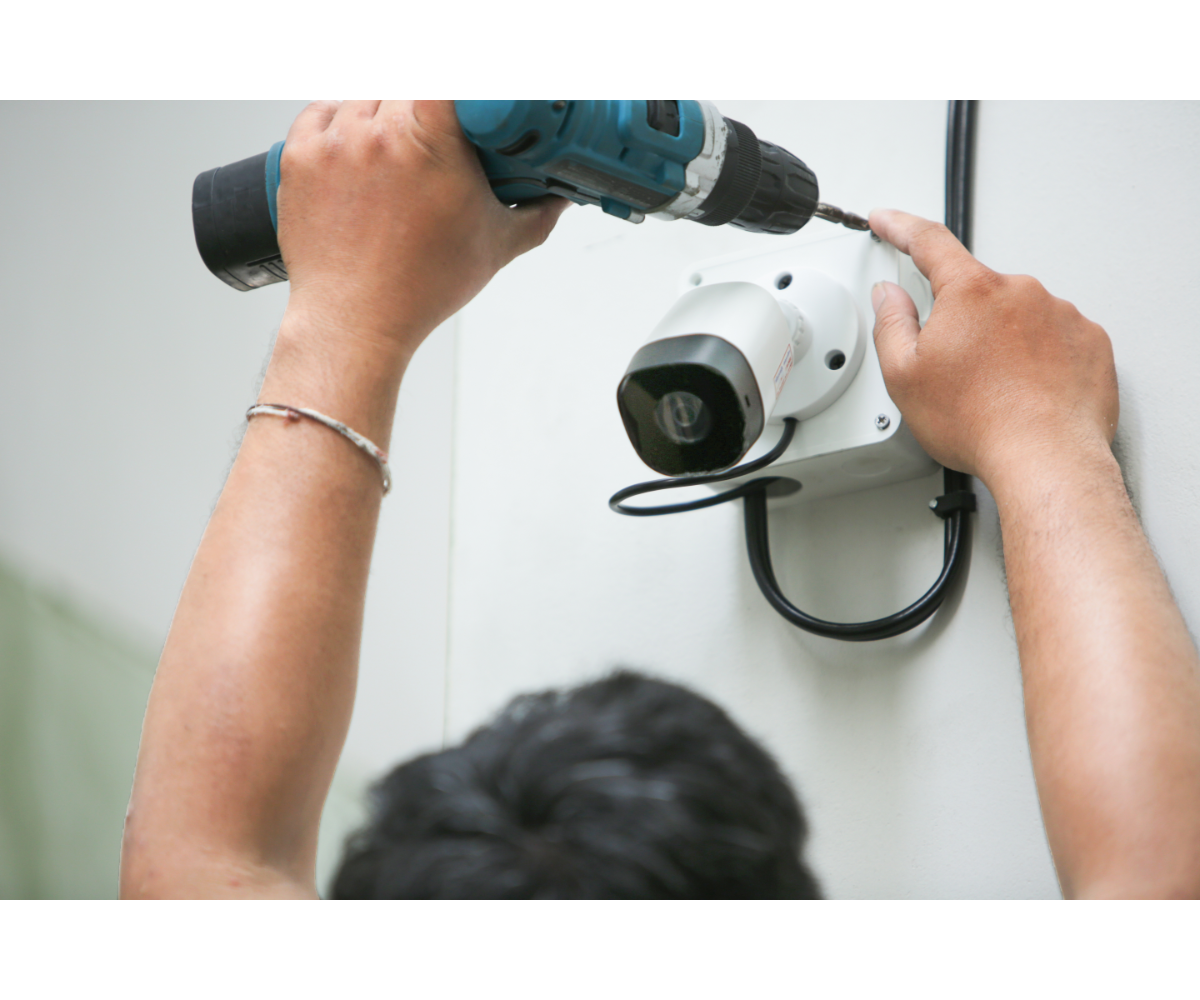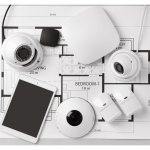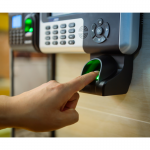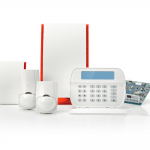As a homeowner, you want to feel secure in your own space. Whether protecting your family from intruders or monitoring for potential fires or floods, home security equipment can provide peace of mind and protection when needed.
In today’s world, the options for home security equipment are vast and varied. From simple door alarms to sophisticated smart home systems that integrate with your smartphone, there is something for every budget and level of desired sophistication.
In this article, we will explore some of the most popular types of home security equipment available on the market today so you can make an informed decision about which system is right for your needs.
Door And Window Alarms
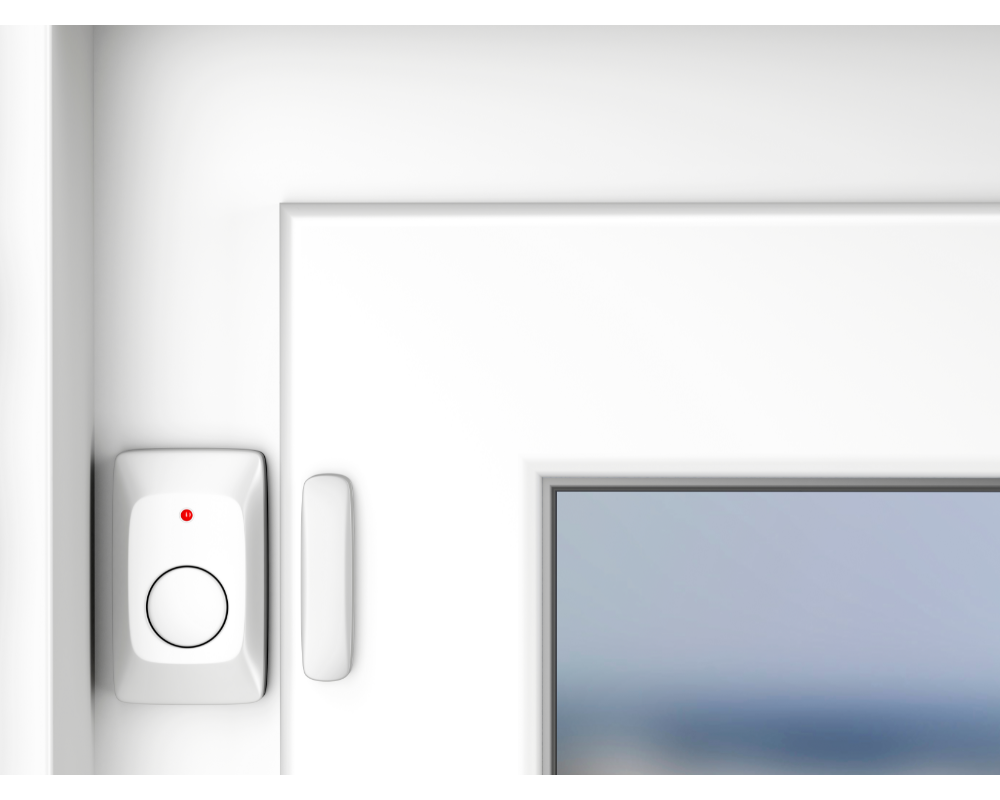
Picture this: it’s a beautiful Saturday afternoon, and you’re enjoying some downtime at home. Suddenly, the sound of your front door creaking open jolts you back to reality. Your heart races as you realize someone has entered your house without permission.
Don’t let this happen to you – protect yourself with door and window alarms.
Installation is easy, with DIY options available for those who prefer to tackle projects themselves. Choose from wired or wireless options depending on your preference and budget. With no need for professional installation, you can have peace of mind knowing that your property is protected without breaking the bank.
When selecting an alarm, consider battery life as well. Look for models that offer long-lasting batteries so you don’t have to worry about constantly replacing them. This saves money in the long run and ensures that your system will always be up and running when needed.
Protecting your home starts with securing its entry points – make sure to invest in the reliable door and window alarms today!
Motion Sensors

Moving on from door and window alarms, motion sensors are another essential component of a comprehensive home security system. These devices detect movement in your home and trigger an alarm if they detect any unauthorized activity. While they may seem like a simple addition to your existing setup, there are several important factors to consider when choosing and placing these sensors.
Placement tips for motion sensors include positioning them at entry points such as doors and windows but also in areas where intruders might try to hide or move around undetected. Some good spots include hallways leading to bedrooms, staircases, and other high-traffic areas inside the house.
It’s also worth noting that some models come with adjustable sensitivity settings – this can be helpful when you want to avoid false alarms caused by pets or other small animals moving around indoors.
False alarm prevention is crucial for keeping your home secure without disrupting your daily life unnecessarily. To minimize the risk of false positives, make sure you’re using motion sensors designed specifically for indoor use rather than outdoor ones that may trigger due to wildlife movements or weather conditions. Additionally, keep in mind that temperature changes or drafts near windows can sometimes cause false alarms; therefore, it’s best practice to test out different locations before settling on final placement decisions.
Overall, incorporating motion sensors into your home security setup can provide peace of mind knowing that any unexpected movements will trigger an immediate response. By following proper placement tips and taking steps toward preventing false alarms, homeowners can ensure maximum efficiency while minimizing disruptions to their everyday routine.
Security Cameras

Security cameras are an essential component of home security systems. They serve as the eyes and ears of homeowners, providing a means to monitor activity inside or outside their homes from remote locations. The benefits of using security cameras in home security cannot be overstated.
One of the significant advantages of security cameras is that they act as deterrents to burglars and other intruders. Seeing a camera on a property can make someone think twice about attempting to break in. Additionally, if a crime does occur, footage captured by the camera can provide valuable evidence for law enforcement officials.
However, there are limitations to relying solely on security cameras for home security. For example, some criminals may wear masks or disguise themselves to avoid being identified on camera.
It’s also important to note that while modern technology has made it possible for homeowners to access live feeds from their cameras remotely, this requires reliable internet connectivity- which may not always be available in certain areas.
While no single solution can guarantee complete protection against all types of threats, incorporating security cameras into one’s home security system provides an effective way to deter criminal activity and collect evidence should a crime occur. As with home safety equipment, homeowners must research before making purchases and ensure they choose reputable products from trusted manufacturers.
Smart Home Systems
Smart Home Systems are the future of home security, offering an integrated approach to keeping your family and property safe. With these innovative systems, you can control everything from door locks to lighting with just a few taps on your smartphone or tablet.
These comprehensive solutions provide peace of mind while also enhancing convenience. Integration options for smart home systems are vast, allowing you to connect various devices and sensors seamlessly. This level of integration enables automated responses and customized controls that cater to your needs.
Additionally, most systems incorporate artificial intelligence technology, which learns your habits over time, making it easier to keep track of what’s happening in your home. Cost analysis proves that investing in a smart home system is not only cost-effective but also provides long-term benefits.
The initial installation may seem expensive; however, the complete automation provided by such systems saves energy costs in the long run. Moreover, many insurance companies offer discounts when homeowners install smart security equipment. Overall, incorporating Smart Home Systems into your house will enhance your daily living experience while providing unparalleled safety features.
The numerous integration options and proven financial advantages, make this investment worthwhile for any homeowner looking to protect their loved ones and secure their properties without compromising comfort or convenience.
Video Doorbells
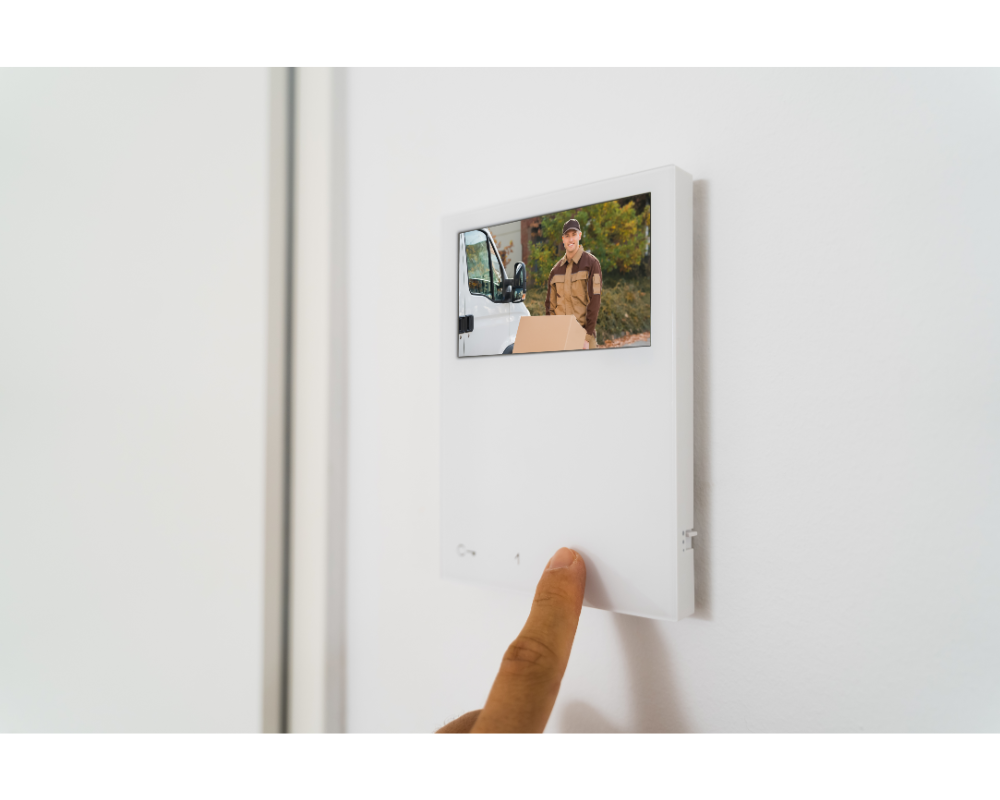
Video Doorbells: The Future of Home Security
Video doorbells have become increasingly popular in recent years as an essential component of home security equipment. These smart devices provide homeowners with a clear view of who is at their front door, even when they are away from home. Video doorbell installation is quick and easy, making it the perfect solution for those looking to increase their homes’ safety.
One of the most significant benefits of video doorbells is that they act as a deterrent to potential burglars or intruders. With live video footage streaming directly to your smartphone or tablet, you can see anyone approaching your property and take action if necessary. Additionally, some video doorbell features include two-way audio communication, allowing homeowners to speak directly with visitors without opening the door.
There are various video doorbell models on the market today with different features and benefits. Some come equipped with motion sensors that trigger alerts once someone approaches your doorstep; others offer facial recognition technology that detects familiar faces and sends personalized notifications. Whatever model you choose, installing a video doorbell will undoubtedly enhance your home’s overall security system – providing peace of mind whenever you’re away from home.
Table:
| Feature | Benefits | Example |
|---|---|---|
| Two-Way Audio Communication | Speak directly with visitors without opening the door | Ring Video Doorbell Pro |
| Motion Sensors | Trigger alerts upon detecting movement near your doorstep | Nest Hello Video Doorbell |
| Facial Recognition Technology | Detects familiar faces and sends personalized notifications | Arlo Essential Video Doorbell |
Incorporating a video doorbell into your home security equipment can be an excellent investment for homeowners looking to improve their protection measures. Not only does this revolutionary device deter unwanted guests, but it also provides live footage of every visitor knocking at your doorstep.
With so many options available on the market today, finding one that suits your needs is easy. By allowing you to monitor and communicate with visitors from anywhere, video doorbells offer a level of convenience that other security equipment cannot match. So why not invest in one today?
Smoke And Carbon Monoxide Detectors

Smoke and carbon monoxide detectors are essential to any home security system. These devices can detect smoke or CO gas in the air, alerting you to potential danger before it becomes life-threatening.
Installing these detectors is relatively simple, but there are a few installation tips that you should be aware of.
When installing smoke detectors, ensure they are placed on each level of your home, including the basement and attic. They should also be located near sleeping areas and outside bedrooms, as well as in living rooms and other common areas. For optimal performance, install smoke detectors at least 10 feet away from cooking appliances to avoid false alarms.
Maintenance best practices for smoke and carbon monoxide detectors include testing them monthly by pressing their test button. Replace batteries every six months or according to the manufacturer’s instructions. It’s important to keep the device clean by vacuuming it regularly using a soft brush attachment. Be sure to replace the detector after ten years; its sensors will have deteriorated over time, making it less effective.
By following these installation tips and maintenance best practices, homeowners can ensure that their homes are protected against fire and deadly gases like carbon monoxide.
Remember that working smoke and CO detectors could mean the difference between life and death in an emergency. Stay safe!
Flood Sensors
Installing flood sensors is a breeze t mount the device in your basement and plug it into your power supply.
Once it’s up and running, you need to set the sensitivity level to detect water leaks.
It’s great for various applications: you can use it to protect your home from floods, detect water damage in your walls, and even monitor water levels in your pool or fountain.
Flood sensors are incredibly easy to operate – they can be remotely controlled via a smartphone app or with voice commands.
Plus, they come with built-in alarms, so you’ll know immediately if your home is at risk of flooding.
With so many uses and easy setups, flood sensors are the perfect addition to any home security system.
Installation
Are you considering installing flood sensors in your home? Whether it’s for added peace of mind or to protect against potential water damage, these devices are a smart investment.
However, when it comes to installation, there are two main routes: professional and DIY. While some may be tempted to save money by choosing the latter option, there are several benefits to investing in professional installation.
For one, experts have the knowledge and experience necessary to ensure that the sensors are placed in optimal locations for maximum effectiveness. They can also guide you on additional equipment that may complement your system. Plus, with professionals handling the job, homeowners don’t need to worry about any mishaps during installation.
Of course, for those who prefer tackling home improvement projects themselves, there are still ways to ensure their DIY installation is successful. First and foremost, follow manufacturer instructions carefully and double-check everything before finalizing placements. It’s also important to test the sensors regularly after installation and make adjustments as needed. Additionally, consider enlisting a friend or family member for assistance – having an extra set of hands (and eyes) can be incredibly helpful!
Operation
Now that we’ve covered the benefits and drawbacks of professional versus DIY installation for flood sensors let’s discuss their operation. Once installed, these devices can provide valuable insight into potential water damage risks in your home, but it’s important to use them properly to get the most out of them.
One significant benefit of flood sensors is that they are relatively easy to operate. Many models come with intuitive interfaces or mobile apps that make it simple to check sensor status and receive alerts if flood risk is detected.
However, homeowners should regularly test their sensors and replace batteries as needed to ensure reliable performance.
Another key aspect of operating flood sensors effectively is understanding how to respond when an alert is triggered. Depending on the severity of the situation, this may involve shutting off water sources, contacting emergency service, or turning off electricity until any flooding has been addressedHomeowners need to have a plan in place ahead of time so they know exactly what steps to take in case of an unexpected event.
Overall, while there are some basic tips and best practices related to using flood sensors properly, their operation tends to be fairly straightforward. With proper maintenance and quick response times during emergencies, these devices can help protect homes from costly water damage – making them well worth considering for any homeowner looking for added peace of mind around potential floods or leaks.
Applications
Now that we’ve covered the benefits and drawbacks of professional versus DIY installation and how to operate flood sensors properly let’s move on to discussing their applications.
Flood sensors have a wide range of uses beyond simply alerting homeowners about potential water damage risks.
One emerging trend in the use of flood sensors is their integration with smart home systems. By connecting these devices to platforms like Amazon Alexa or Google Home, users can receive real-time updates on sensor status from anywhere in the world using voice commands or mobile apps. This level of connectivity allows for greater peace of mind when it comes to protecting homes from flooding – even when homeowners are away on vacation or business trips.
Another key application for flood sensors is in commercial buildings and industrial facilities. These environments often face unique challenges related to water management and require advanced monitoring solutions to prevent costly damage. Flood sensors can be used with other equipment, such as sump pumps and drainage systems, to provide an integrated approach to water management that reduces risk and improves overall facility safety.
Overall, while there are some limitations to consider when it comes to using flood sensors effectively, their broad range of applications makes them a versatile tool for any homeowner or business owner looking to protect their property from unexpected water events.
As emerging trends continue to shape the landscape of home security equipment, it’s clear that innovative solutions like flood sensors will play an increasingly important role in keeping our living spaces safe and secure.
Panic Buttons And Personal Alarms
After being flooded with information about flood sensors, let’s dive into the world of panic buttons and personal alarms. These devices are like lifeguards on watch, waiting to jump in at a moment’s notice, and they serve as an extra layer of protection for those moments when you need it most.
One benefit of these products is their ease of use. With just one button, help can be on the way. Panic buttons can also have customizable features, such as alerting specific contacts or emergency services. However, there are limitations to consider. Some models may not work outside of the home, while others may require additional fees for monitoring services.
When searching for the best brand or model, finding ones that fit your specific needs is important. Companies such as ADT, SimpliSafe, and Ring offer various options ranging from wearable devices to wall-mounted units. It’s always recommended to do research and read reviews before making a purchase.
Incorporating panic buttons and personal alarms into your home security system provides peace of mind knowing that help is just a push away. While they may not prevent all emergencies, they add an extra layer of protection for you and your loved ones.
Stay safe and secure with these valuable tools by your side.
Home Safes

Home safes are popular for homeowners looking to protect their valuable items. They offer many benefits, such as providing peace of mind and protecting against theft or fire damage. However, there are also some drawbacks to consider before investing in one.
There are several types of home safes available on the market today. The most common types include wall, floor, and portable safes. Wall safes can be installed directly into a wall for added security, while floor safes can be bolted to the foundation or concrete slab of a house. Portable safes provide flexibility and can be moved around the house depending on your needs.
Regarding features, home safes come equipped with various locking mechanisms such as key locks, combination locks, electronic keypad locks, or biometric fingerprint scanners. Some models even have additional features like waterproofing or an alarm system that will sound if someone attempts to tamper with the safe.
While home safes offer many benefits, they do have some drawbacks worth considering. For example, they may not be big enough to hold larger items like firearms or artwork. Additionally, if you forget your combination or lose your key, accessing your valuables could become difficult.
It’s important to carefully weigh these pros and cons when deciding whether a home safe is right for you.
Investing in a home safe can help keep your valuable items secure from theft and fire damage. With different types and features available on the market today, you’re sure to find one that fits your unique needs and preferences. Just remember to consider both the benefits and drawbacks before making your final decision.
Security Lighting
Security Lighting is an essential part of a home security system. It helps deter criminals from accessing your property and provides you with visibility at night.
There are many placement options for Security Lighting, including around the perimeter of your home, near entry points, and in areas with little or no natural light.
When installing Security Lighting, energy efficiency should be considered to reduce your electricity bill. LED lights consume less power compared to traditional bulbs and last longer too. Additionally, motion sensor lighting can help save energy by only turning it on when someone approaches it.
Placement options for Security Lighting depend on the size of your property and its layout. For instance, if you live in a large house with multiple entrances, placing lights near each entrance would be ideal. However, if you reside in a smaller apartment building, having one central light fixture may suffice.
Regardless of the placement option you choose for Security Lighting, ensure that they cover all vulnerable spots and provide maximum visibility at night without causing any disturbance to neighbors.
Frequently Asked Questions
How do I choose the right home security equipment for my specific needs?
When it comes to securing your home, there are a few factors you’ll want to consider.
Firstly, remote monitoring is an essential feature that allows you to keep tabs on your property even when you’re away. This can include live video feeds and notifications sent straight to your phone in the event of suspicious activity.
Another important aspect is DIY options, which provide more flexibility and cost savings compared to professionally installed systems. With DIY equipment, you have complete control over how many sensors or cameras you need and where they should be placed for optimal coverage.
Ultimately, choosing the right home security equipment boils down to understanding your specific needs and finding a solution that meets them effectively.
Can I install home security equipment myself, or do I need to hire a professional?
When installing your home security equipment, there are two options: DIY or professional installation.
While DIY installation may seem cheaper, it’s important to consider the potential risks and challenges of doing it yourself.
Hiring a professional can ensure that your equipment is installed correctly and functioning properly, giving you peace of mind when it comes to protecting your home and family.
Of course, the cost will be a factor in your decision-making process, but don’t let price be the only deciding factor – weigh the benefits and drawbacks of each option before choosing which route to take.
Will my home insurance rates decrease if I install home security equipment?
By installing home security equipment, you protect your family and belongings and may also be eligible for lower insurance rates.
Cost-benefit analysis suggests that the investment in a quality security system is worth it compared to potential losses from theft or damage. However, an effective comparison should be made between different options before purchasing.
It’s important to note that insurance policy discounts vary depending on the provider and their compatibility with specific security equipment. So make sure to check with your insurer beforehand to fully understand the benefits of adding home security measures to your property.
What should I do if I experience a false alarm notification from my home security equipment?
Troubleshooting and preventing false alarms is crucial for any homeowner with a security system. False alarms can be triggered by anything from pets to faulty equipment, which can result in fines or even police response fees.
If you experience a false alarm notification, the first step is to investigate the cause of the trigger. Check your sensors and cameras for any signs of tampering or malfunctioning.
Additionally, ensure that all members of your household are informed about how to arm and disarm the system properly. By taking these preventative measures, you can avoid costly false alarm incidents while ensuring that your home remains secure at all times.
How often should I test and maintain my home security equipment?
Maintaining your home security equipment is like taking care of a car.
Just as you wouldn’t wait until the brakes fail to get them checked, you shouldn’t wait for an emergency to test and maintain your system.
Testing frequency and maintenance checklists are crucial components of responsible homeownership.
Experts recommend testing your home security equipment at least once every quarter and performing routine maintenance checks twice a year.
By staying on top of these tasks, you can ensure that your system operates smoothly, protecting your family and valuables from harm.
Conclusion: Home Security Equipment
When protecting your home and family, choosing the right security equipment is crucial. Take the time to research and compare different options before making a decision. Consider factors such as cost, features, and compatibility with your home’s layout.
While some people may choose to install their own home security equipment, hiring a professional can ensure proper installation and reduce the risk of false alarms.
And if you’re looking for ways to save on insurance rates, installing home security equipment could be the answer.
But remember: even with top-of-the-line equipment, regular testing and maintenance are key to ensuring optimal performance. Don’t let complacency put your safety at risk – stay vigilant and take proactive steps to protect what matters most.

